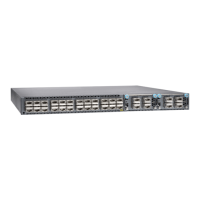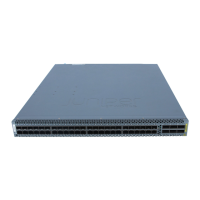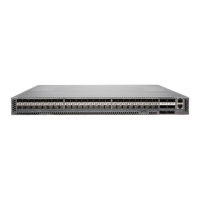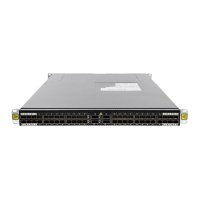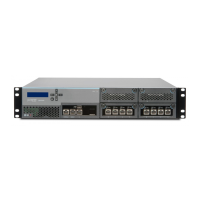Table 34: Alarm Terms and Definitions (continued)
DefinitionTerm
Alarms include the following types:
•
Chassis alarm—Predefined alarm triggered by a physical condition on the device such as a power supply
failure or excessive component temperature.
•
Interface alarm—Alarm you configure to alert you when an interface link is down. Applies to ethernet,
fibre-channel, and management-ethernet interfaces. You can configure a red (major) or yellow (minor)
alarm for the link-down condition, or have the condition ignored.
•
System alarm—Predefined alarm that might be triggered by a missing rescue configuration, failure to
install a license for a licensed software feature, or high disk usage.
Alarm types
Related
Documentation
Chassis Alarm Messages on a QFX3008-I Interconnect Device•
• Chassis Alarm Messages on a QFX3500 Device
• Interface Alarm Messages on page 146
• show chassis alarms
• show system alarms
Interface Alarm Messages
Interface alarms are alarms that you configure to alert you when an interface is down.
To configure an interface link-down condition to trigger a red or yellow alarm, or to
configure the link-down condition to be ignored, use the alarm statement at the [edit
chassis] hierarchy level. You can specify the ethernet, fibre-channel, or
management-ethernet interface type.
NOTE: Fibre Channel alarms are only valid on QFX3500 devices.
NOTE: When red alarmsor major alarms areissued on QFX5100 and EX4600
switches, the alarm LED glows amber instead of red.
By default, major alarms are configured for interface link-down conditions on the control
plane and management network interfaces in a QFabric system. The link-down alarms
indicate that connectivity to the control plane network is down. You can configure these
alarms to be ignored using the alarm statement at the [edit chassis] hierarchy level.
NOTE: If you configure a yellow alarm on the QFX3008-I Interconnectdevice,
it will be handled as a red alarm.
Copyright © 2017, Juniper Networks, Inc.146
QFX5110 Switch Hardware Guide
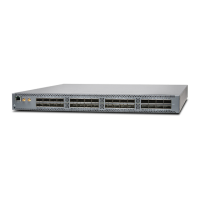
